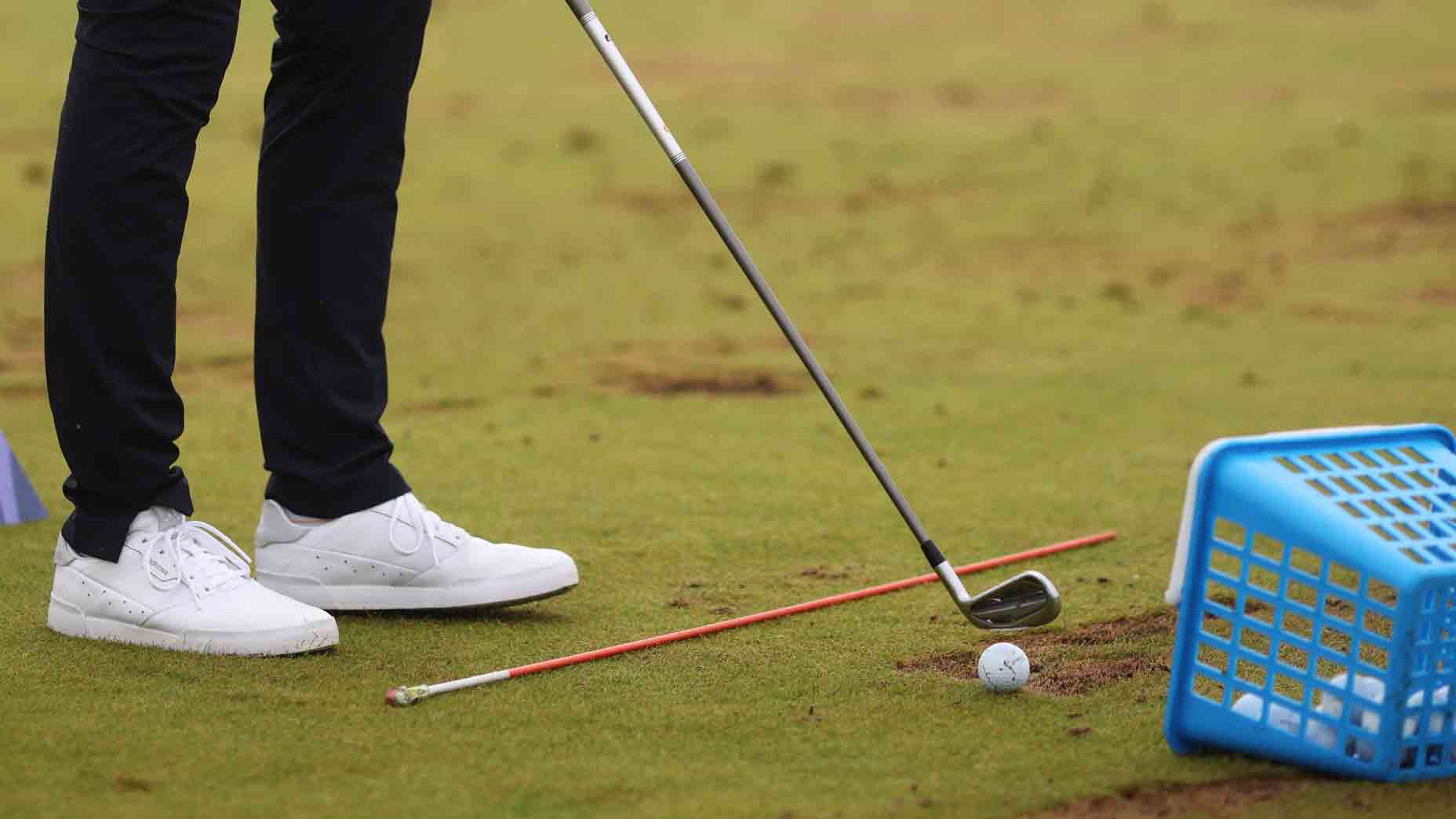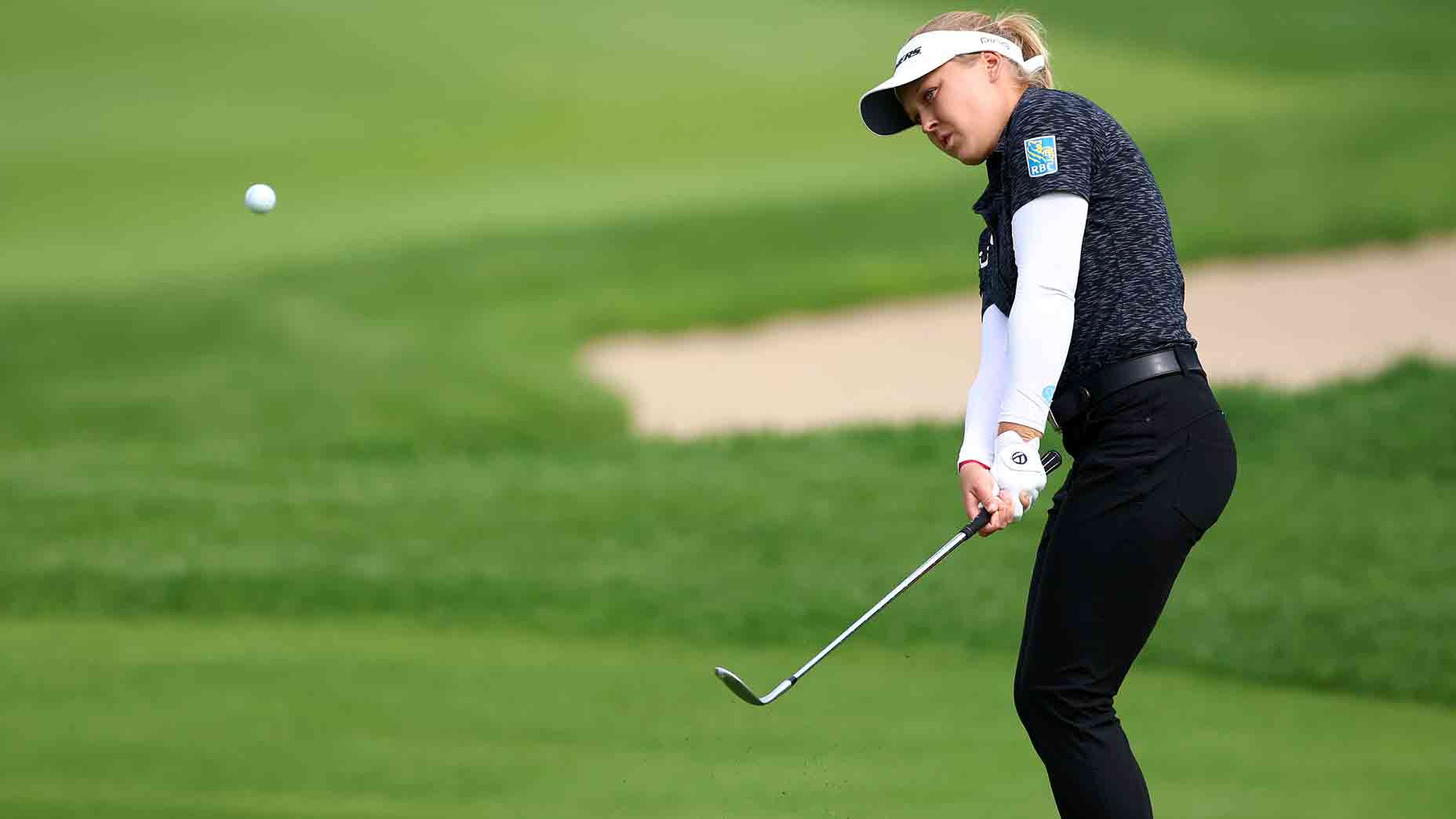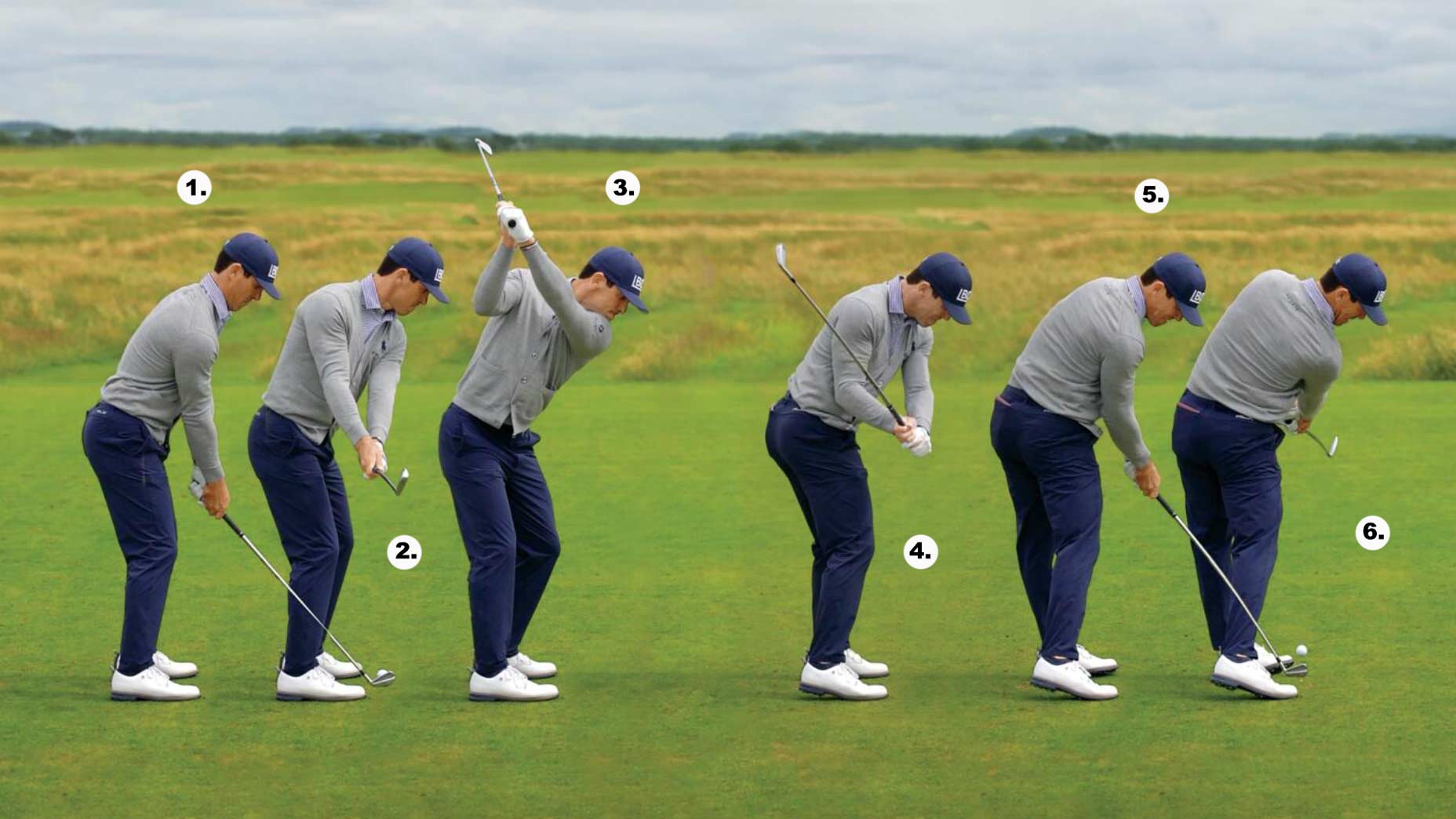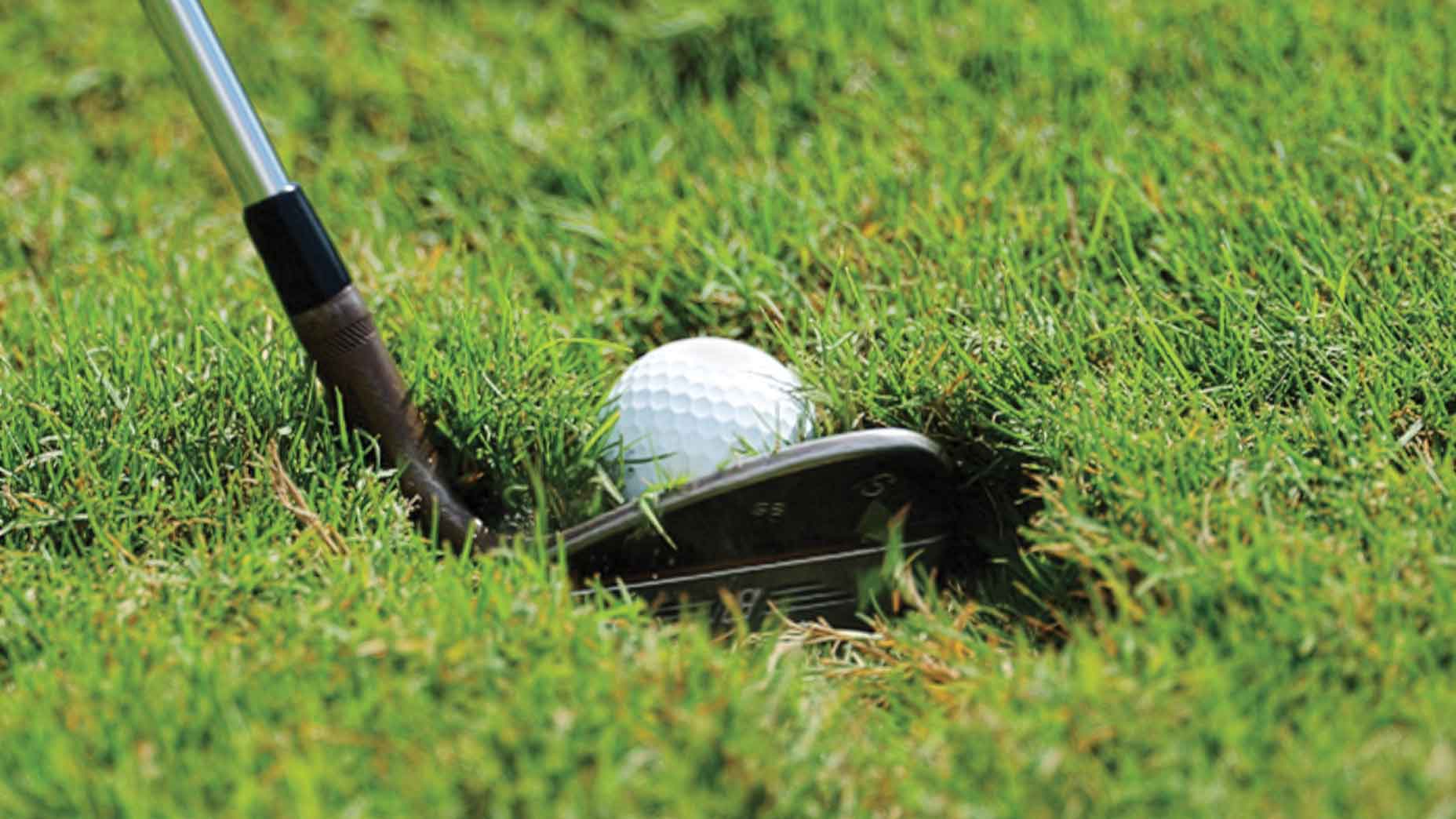Great golfers do things mid- and high-handicappers don’t. Let’s change that in 2023. I’ve coached players to 11 major wins over the years while simultaneously working with golfers like you. And yes, there are differences.
Here are six easy — and major-proven — moves to take any game to the next level.
1. Have a pep talk
Overcoming the first is easy: Be nicer to yourself. Good players rehearse their swing, then address the ball with only positive thoughts, thinking about what they want to do, not what they don’t want to do. They program success. You? Just the opposite. Think of what typically runs through your head (see left) just before you start your swing — not good. Carrying over confidence from your practice swing to your actual one — in the absence of negative or internal thoughts — is a very powerful tool.
2. Train … then go play

Most of the golfers I teach are always working on some part of their game, trying to get a little better each day by focusing on mechanics. That’s fine, as long as you limit mechanical work to training sessions. Good players know that swing thoughts have no place on the course. Separate your practice from your play, using range time to rehearse swings so you can execute them without thinking.
What will help is practicing with a work station placing an alignment stick ahead of the ball on my target line and another stick parallel to the first in front of my toes. Regardless of what you’re trying to learn (a fuller turn, stopping your hands in the right spot, shifting your weight appropriately, etc.), the station will at least tell you what your target is and if you’re pointed in the right direction. Otherwise, what’s the use of all that practice? Rehearse moves at half speed if you have to. But once you step on the course, just play, using your training to instill confidence.
3. Find a swing you can score with
There will be days when you simply don’t have it. Happens to the best of us. What really turns things from bad to worse, however, is trying to “fix” a misbehaving swing on the fly. That almost never works. Good players — while they might not love it — are okay with changing tack to protect their score, knowing the fixing will have to wait for later. Enter the “go-to” swing: a simpler motion that you know you can pull off without fail. Most good players always have two in their back pocket, as follows.
A knockdown iron
Full-swing problems? Don’t go full then. Grip down on the handle an inch or two, narrow your stance slightly and make a smooth swing, cutting off your finish when your hands reach shoulder height. Pretty easy stuff—and you’ll lose only a half club (at most!) in distance. Expect a flatter ball flight but, ironically, one that’s easier to control than an all-out effort.
A low-fade tee ball
Even on an off day, you can score as long as you’re still hitting fairways. Here’s a trick: Grip down and tee the ball so that all of it sits below the edge of the crown. With this setup, you’ll better manage sidespin. The ball will fade a bit and fly lower, but, if you aim accordingly, it’ll end up in the short stuff.
4. Learn your wedge carries

There’s an old saying that you “win with your wedges.” I’m a believer. What that really means is that when you’re staring down a pin with a wedge in your hands, it’s an opportunity to knock one close. There are two parts to this. The first is knowing how far you carry each of your wedges with your everyday full swing. (If you haven’t charted this out yet, do so.) The second is knowing how to subtract yards from your scoring clubs, because it’s the rare situation where the yardage to the pin will match any of your wedge carry distances. You’ll almost always be between clubs.
The secret to dialing down, say, your sand wedge from its full 85 yards to 65 based on your distance to the pin is to adjust the length of your swing on both sides of the ball. Great players work on this all the time. During your next training session, find out how far the ball carries off each wedge with a quarter, half, three-quarters and (of course) a full swing. You can even make your own yardage chart. If you put in the time, you can generate 16 different yardages with your scoring clubs (assuming you carry four wedges). That should be enough to handle whatever the course throws at you, leaving no excuse to be around the pin from short range.
If you don’t want to get that involved, simply add swings in which you hit the ball your full carry and something (say, 20 yards) shorter to your warm-up routine. Do it for each of your wedges. It’s a good start and will actually help you with improving your tempo throughout the bag. Eventually, you’ll need to see how changing the pace of your swing affects these distances, but, for now, simply groove different swing lengths.
5. Aim smart

Question: If you played a round of golf where the greens crew forgot to add the pins, where would you aim your approaches? Of course, without knowing the exact location of the hole, you’d almost certainly go for the middle, or safest, part of the green. Yet, when flags are in like normal, most golfers automatically aim for the pin. Big mistake.
The smart way to plan your approach shots is to know your miss percentage, i.e., how far from your aim point does the ball typically land on approach shots. My Tour students average about 5 to 7 percent (in proximity to the pin); most of my rec students are 10 percent and beyond. That means, for example, on a 150-yard approach, you’re likely to end up 15 yards (or 45 feet) from the pin in all directions. Armed with this knowledge, you should know where to aim. A pin cut five yards from a hazard? Uh-uh. That’s not your ideal target. Look for something safe that accommodates your miss percentage.
Strategizing this way isn’t what you think it is — throwing away a chance at an easy birdie. Instead, it’s playing smart, making a two-putt the worst possible outcome. If pros use this strategy, there’s no reason you shouldn’t too. And who knows? You might just make a bomb, even after playing it “smart.”
6. Chip to a landing spot

There’s a lot that goes into chipping the ball close. There’s the lie, the distance, the tilt in the green and club selection, to say nothing of your confidence level. But there’s a pervasive mistake among amateurs that good players never make, and that’s earmarking the total yardage to the pin as the landing spot for the shot. Truth is, it’s much shorter.
Good players look at the distance from the fringe to the hole and base their landing spot from there. Best to use an example. Say there’s 30 feet between the edge of the fringe and the cup. Good chippers will cut that distance in three parts, planning to land the ball 10 feet on, then rolling it an extra 20. Ten feet is the target in this scenario, not the full 30. Once you get your head around this relationship, more of your chips will end up in tap-in range.
It works for most greens, especially if the putting surface is flat or rolling away from you. In the event of chipping into an upslope, or if it simply feels more comfortable, you can cut the distance between the fringe and the hole in half, making a plan, using the same example, to land the ball 15 feet onto the green and letting it roll the final 15. The lesson here is that the important thing isn’t your distance to the pin from your lie. It’s the distance to your preferred landing spot.
Trust the concept and you’ll see that getting up and down is as easy as the pros make it look to be.
Mike McGetrick is a GOLF Hall of Fame Teacher who teaches at Robert Trent Jones GC in Gainesville, Va










